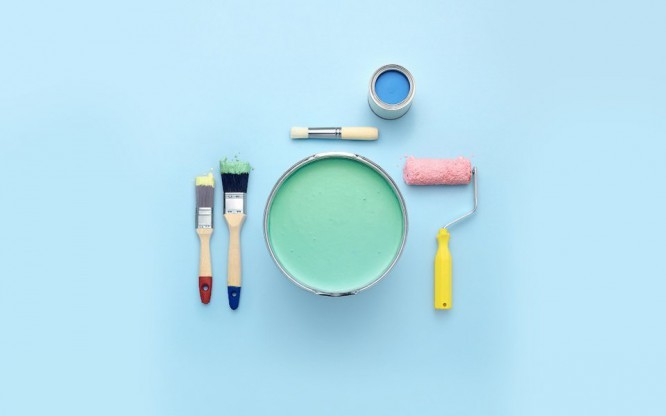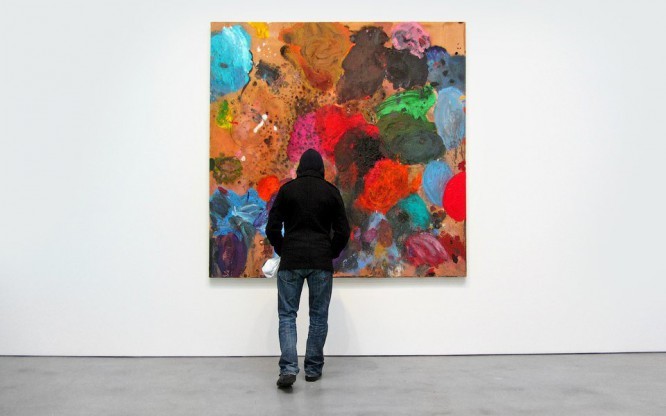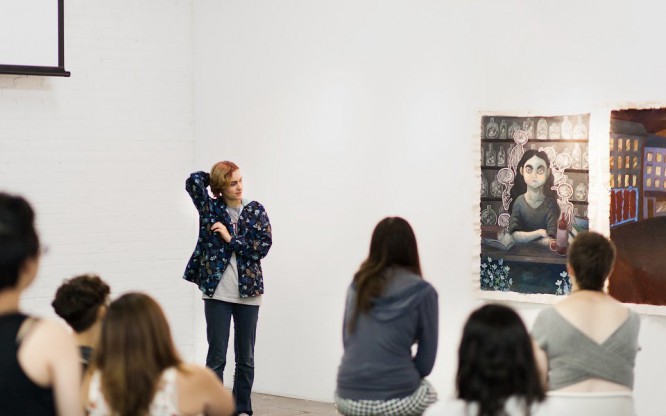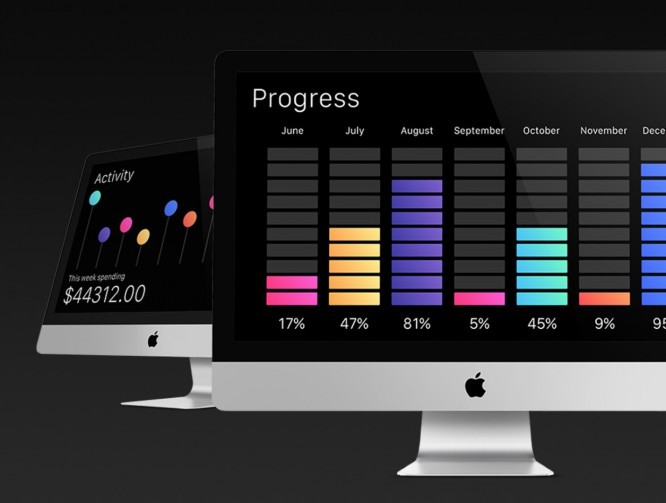How to learn to think creatively
How to learn to think creatively
Thinking creatively is a process we all use to generate new ideas, be it picking a friend’s birthday present or solving everyday problems at work. However, many people believe that they do not have a creative streak, and they are cunning. Every person is creative from birth. Over the course of many thousands of years in the course of evolutionary development, humans have learned to think creatively, and have done quite well at it. At the next stage, people learned to suppress their creativity. We decided to figure out if you can regain creativity and how to increase your creativity.
We are taught to be creative from an early age, but at the same time they are also taught to follow the rules, for example: “the colors in the coloring should not go beyond the lines …”. The innate ability to be creative is fading away due to the fact that we have to get along with the rules of the environment and try to do “like everyone else.” The older a person gets, the less often he can afford to show his creative potential.
Our brains do try to follow logic, but not as often as it seems. The left hemisphere is responsible for logical actions, it is there that all facts are analyzed, mathematical symbols are recognized, and names and dates are memorized. The right hemisphere gives us the ability to daydream and fantasize. It is the right hemisphere that is responsible for storytelling, music, and visual arts. Yoga with its meditative practices and psychedelic drugs provide an opportunity to touch and experience some experience of right-brain perception. However, the secret of effective creative thinking is not to turn off the left hemisphere, but to develop the correct interaction between the left and the right.
Typically, creative thinking works both intentionally and accidentally; it is randomness that makes us think about something differently and leads us to some new useful ideas. Other changes are slow due to a series of coherent inferences. Improvement occurs through a combination of these random and logical processes, but it often takes a long time, especially in a competitive and constantly accelerating world.
Goal setting and awareness

Creativity is best viewed as a chain of tasks rather than an abstract thing. This process helps you solve a specific problem – come up with an idea for an article, draw an illustration, or design a website interface. Not a single person in history has been creative just like that, regardless of any specific projects. When a task appears, it must be studied from all sides.
Creative people tend to have one important habit – they rethink the problem over and over again. This means that instead of rushing to work right away, they sit back and study the problem from different angles before tackling it. And it’s good if this stage does not drag on for many weeks and months.
Hard work

Scott Burkan, a journalist and author of many best-selling self-help books, writes that the biggest difference between recognized geniuses and us is that they have worked much harder. They simply spent more time at a notebook with calculations, in front of an easel or computer. The main goal is to choose a problem that is of your concern and start working on solving it. If you don’t care about absolutely nothing, then your problem is not a lack of creativity, but banal apathy.
To be convinced of his theory, Berkan suggests taking any famous creative character and his main project, thanks to which he found fame, and investigating how many sketches, prototypes and attempts he had to produce in order to get such an outstanding result. Of course, flashes of insight happen, but really worthwhile ideas come only when a person works without straightening his back.
Try to do a lot of work, and quality will naturally flow out of quantity. As designer Stefan Sagmeister said, it is very important to be afraid as little as possible and to work as much as possible. “It’s much, much better to deal with a lot of crap right away than to think about it for a long time, but never get to work,” the designer thought.
He is echoed by the American radio host and producer Ira Glass: “The first couple of years you just do things, and they may not turn out as great as we would like. That is, you try to do well, you have potential, but so far it is not very successful. You must understand that this is normal and the most important thing you can do at this stage is to do as much work as possible. This is the only way that the quality of your work will be as high as your ambition. But it will take some time. “
Exercises to increase creativity

“The product of creativity is not at all the work of genius or divine inspiration, but in reality, creativity is just the ability to identify problems and develop effective solutions for them,” writes Laura Pappano for The New York Times. Increasing your creativity is like building muscle, just a little harder. There are special techniques that stimulate intentional creative thinking.
One of the most popular methods is brainstorming, which traditionally begins with a listing of unoriginal ideas, in the course of a collective discussion of which something original is born.
IDEO, a design and innovation company that employs Procter & Gamble, HP, Nestle, Samsung, NASA, BBC, Intel, Lufthansa and other giants, has developed its “creativity boost” methodology. The Harvard Bussiness Review has published three exercises used by the company.
IDEO managers also believe that continuous practice is essential to unleash creativity. To begin with, you should force yourself to think about the problem in a divergent manner – that is, in different directions. A mindmap or mindmap can help with this.
Firstly, they are a great way to cope with the fear of a blank page, secondly, they help to find patterns and explore the topic, and thirdly, to come up with a really new idea, to write down its entire evolution. As an example, experts suggest considering the idea of a dinner party for friends.
On a large, blank piece of paper in a circle, write your central theme or problem. Ask yourself, “What else can I add to the map that relates to this topic?” Write down all the ideas as branches emanating from the center, and don’t worry if they are too obvious or cliché. It always happens. Use each connection to stimulate new ideas. If one of your ideas leads to a completely new cluster, circle it in a rectangle or oval to emphasize it.
Continue to expand the map as far as possible, as long as your imagination allows. Soon, you will discover completely unpredictable and even “wild” ideas. When the page is full and you feel like you’re not done yet, try reframing the central theme and making another map, getting a fresh perspective on the problem.
The thirty-circle exercise was invented by Bob McKim, and it is a great “warm-up” for creative thinking. Give each participant a sheet of 30 identical circles and ask them to draw as many recognizable objects as possible in three minutes. Compare your results and look at the number of ideas who managed to complete 10, 15, 20 or more circles? Next – look for variety or flexibility in ideas. There are derivative ideas (a basketball, a planet, a cookie or a smiley), but sometimes people go beyond their circles, “breaking the rules” and combining them into two or more.
In search of new knowledge and research on a problem that interests you, you probably met people who feel like a fish in water in this topic. You listened to these people and watched them closely. Now you need to organize all the received data in the “empathy map”. Divide the board into four equal parts say, do, think, and feel.
Write down each of your observations in a particular area on a separate sticker and place the finished notes in the “say” and “do” groups. Moreover, for example, write down positive statements and actions on green ones, neutral ones on yellow ones, and the most disappointing and problematic ones on pink and red ones. When you run out of space or options that you would like to place in these sections, start pasting stickers in the lower quarters – “think” and “feel”.
Now write observations about body language, tone, and word choice on the notes. At the end, look at the entire map, does it lead to any insights and conclusions? Are there contradictions or inconsistencies within individual sectors or between them? Perhaps you see some unexpected connections?
Forget about the result and “cool down”

Finding a balance is important. Working on a project non-stop can lead to the fact that you quickly get tired of it and “kill” all your creative reserve, so do not forget about breaks that will allow you to “cool down.” It is also important to stop worrying about the result all the time. Let’s imagine a situation that you, for example, decided to learn how to draw, and have never come into contact with this type of creativity before.
You came to a course where for the first time you encountered an easel, and, of course, you are overwhelmed by the fear of making a mistake, of doing something wrong. Trusting your intuition and instincts is hindered by the fact that you are afraid that your drawing will end up being the ugliest in the class. Learning to be creative requires developing inner courage and suppressing fear of something new and unknown.
Environment

To become more creative, you need to surround yourself with an appropriate environment. It is logical that brainstorming with creative like-minded people will be more effective than with random people. Chatting with other creative people and sharing ideas is a great nourishment. Try to attend seminars, lectures more often, create profiles on LinkedIn, Behance, Dribbble, Cargo, DeviantART, etc.
However, an innovative idea is more difficult to endure if you follow the path of “least resistance” using the same familiar toolbox that is at hand. The point is, stepping out of your comfort zone can boost your creativity. That is why, for example, famous writers and artists loved to work in cafes so much. This phenomenon is explained in a study published in the journal Journal of Consumer Research.
The creative process is also aided by reading absurdist and surrealist literature. Those who have read Franz Kafka and Alice in Wonderland have been proven to be more creative. Scientists have concluded that the human mind is constantly trying to find logic in things that happen, and surreal and absurd stories put the brain in a dead end and give the opportunity to “reboot”.
Source: LAM
…


